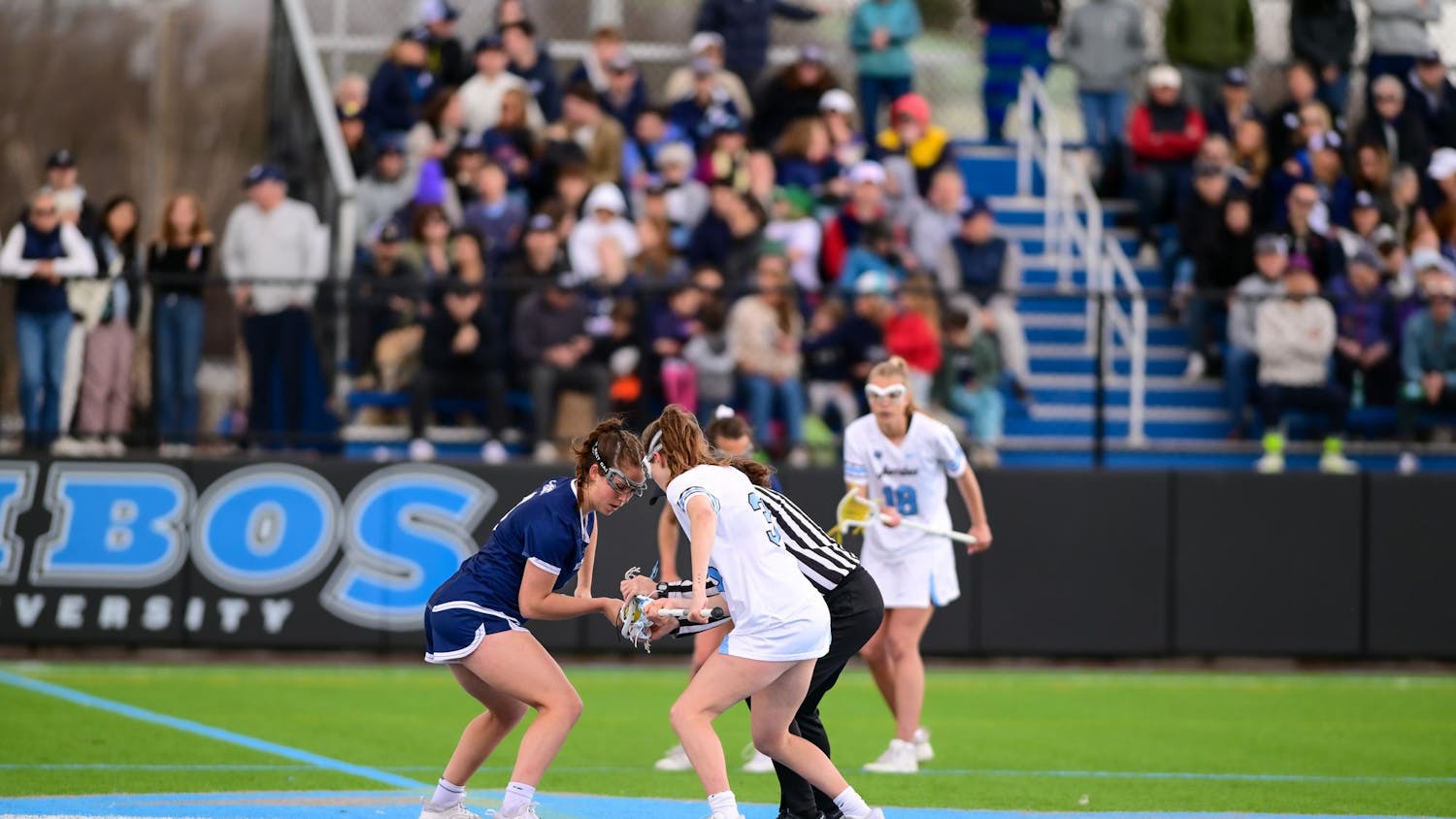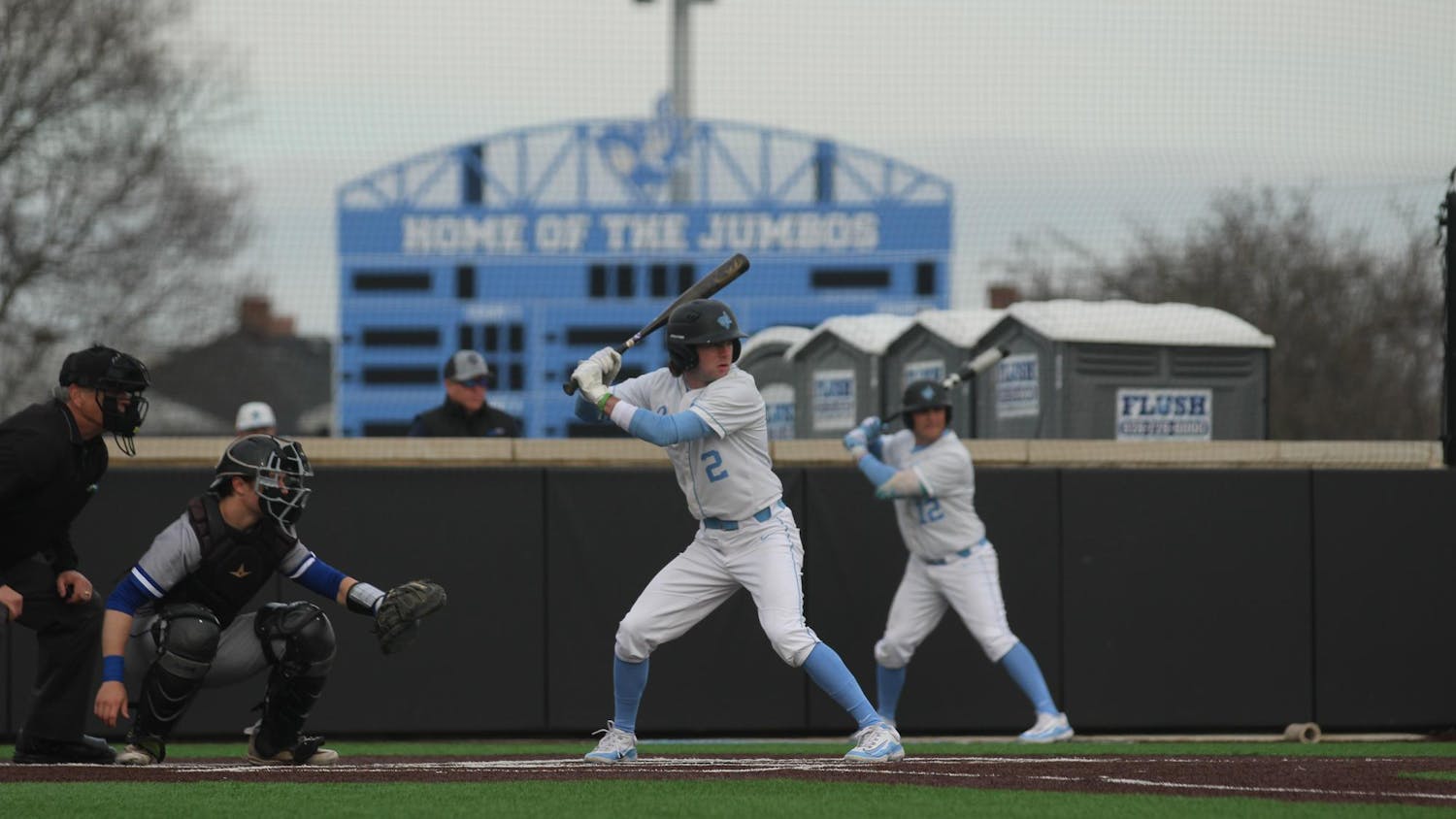Like many universities in the U.S., Tufts is a predominantly white institution. While the Jumbos impress on the field, this lack of diversity can often be overlooked within athletics.
In 2018–19, 76% of Tufts student-athletes were white, compared to the 55.2% of total undergraduate students who were white. Of the non-white student-athletes, 56% were male and 44% were female — which happens to almost exactly match the overall male/female split of Tufts student-athletes.
This data comes from the annual Sports Sponsorship and Demographics Report that NCAA schools must submit every summer, according to Alexis Mastronardi, senior associate director of athletics and senior woman administrator.
Tufts also accurately reflects the demographics of the NESCAC as a whole, too: The NCAA reported in 2018 that 78% of all NESCAC student-athletes were white.
With an overwhelming portion of the university’s student body identifying as white, it’s no surprise that at Tufts, student-athletes of color are also a minority. Of course, diversity varies from team to team — some teams tend to have more athletes of color than other teams.
“Tufts is a [predominantly white] campus, and once you get to the athletic teams, you only see one or two people of color, except for the football and swim teams,” senior Alison Moky, a former lacrosse player who now competes in track and field, said.
The general minority of student-athletes of color has led to the creation of an organization — Athletes of Color (AOC) — of which Moky and senior Afua Ofori-Darko serve as co-presidents.
AOC has existed for several years, but Moky and Ofori-Darko, a former member of the women’s tennis team, have recently revamped the organization as co-presidents on its nine-person executive board. AOC now has Tufts Community Union recognition and more administrative support from staff such as Mastronardi, football coach and Student-Athlete Advisory Committee (SAAC) staff liaison Jay Civetti, and Associate Provost and Chief Diversity Officer Rob Mack.
“We made it our point that before we leave this campus ... we want to make sure that everyone has a safe place that they come to talk about issues that they feel they can’t talk about to anyone else,” Moky said.
For Ofori-Darko, part of that inspiration came amidst NFL quarterback Colin Kaepernick’s national anthem protests and the controversy surrounding them.
“The Colin Kaepernick [situation showcases] why [AOC] needs to happen on our campus, because when that happened, I saw all the different viewpoints people had,” Ofori-Darko said. “For me, it was hard to see how almost ignorant some people were about that situation.”
In the past, AOC focused mainly on supporting student-athletes of color and providing space to share their experiences, hosting study nights and dinners, and cheering on athletes of color at their games. This year, AOC is working more on outreach and education: Plans are in the works for diversity education for coaches and staff, and potentially student-athletes further down the road.
Moky and Ofori-Darko are also working on an event to celebrate Martin Luther King Jr. Day in January, which may include performances from student groups at athletic events as well as an alumni panel and discussion. Civetti noted that there has also been interest for student-athletes to be involved in the coach recruitment process to increase diversity on coaching staffs.
According to Moky and Ofori-Darko, student-athletes of color are regularly affected by microagressions — inside and outside of athletics — which is why AOC believes these initiatives are so important.
"They are just microaggressions, but they add up after a while,” Ofori-Darko said. “I wouldn’t say it’s anyone intentionally doing these things, but we want people to be aware of their actions and what they’re saying.”
As such, AOC provides space for student-athletes of color to share their experiences and find a supportive community.
“That’s why we have Athletes of Color: to have a safe place in order to encourage people to talk and to share about things that are on their mind, or something that they feel they can’t just go right to their coach about because our coaches or other teammates [may not] understand how to empathize with us,” Moky said.
Ofori-Darko recalled a specific instance when a conversation with her team about a Boston Globe article series calling Boston the “most racist city” led to some uneasiness. In discussing the article, Ofori-Darko claimed that her opinions were dismissed by another teammate.
“They specifically told me not to talk about it anymore,” Ofori-Darko said.
Another potential issue rests at the intersection of race and socioeconomic background — some student-athletes of color may need to work in addition to academics and athletics. While this is a broad generalization and every individual (student-athlete of color or not) has their own unique situation, student-athletes who have commitments outside of athletics may face additional difficulties.
“This is not me personally, but some coaches don’t understand that some athletes of color are not from the most advantaged backgrounds and they have to work after practice,” Ofori-Darko said. “For some coaches, that comes off as they aren’t committed to the team because they’re doing other things besides athletics, but it’s what they have to do.”
Moky explained that recent events of bias and hate on campus,such as the blackface incident in January, should also prompt conversations within athletics.
“Those issues shouldn’t be pushed to the side because there are some people on the team that think what they did isn’t wrong or it’s right, and that’s not necessarily true,” Moky said. “It’s the coaches’ job to have those conversations with all the teammates so that one person isn’t feeling like ... they don’t belong because other people don’t understand what’s going on.”
The hope is that through AOC’s student leadership and initiatives, coaches will have the tools to foster these types of conversations with their teams to benefit the experiences of student-athletes of color. Civetti acknowledged his role as a coach in these conversations.
“When you have a team of 70, 80 guys from all different diverse backgrounds, there are a lot of opportunities to have real conversations about race and about beliefs,” Civetti, who has worked with AOC through his role with SAAC, said. “[For example,] how you handle playing the national anthem; how you have a locker room of 76 guys and almost 50% of the team are students of color in a predominantly white community.”
“We really want to be connected with our campus, and we want to go out there and educate and promote,” Ofori-Darko said. “We can come [together] and complain all we want, but nothing will change if we do that, so that’s why we want to have the trainings and [educational outreach], so that we can actually make a difference.”
More from The Tufts Daily





